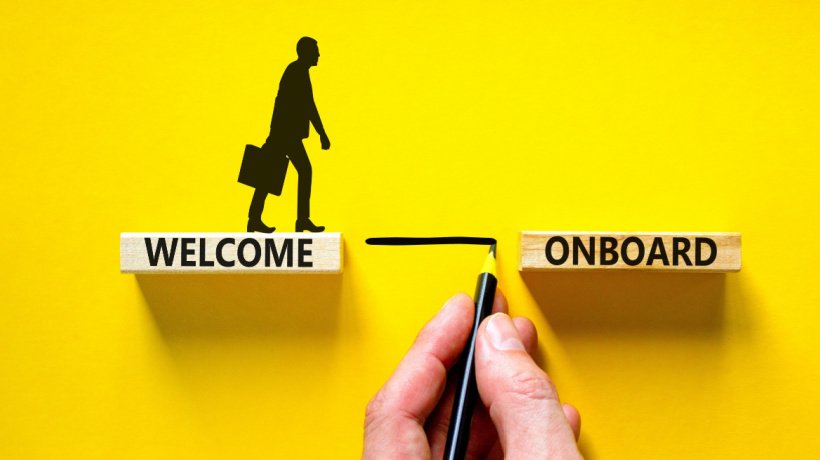Pocket Guide For Onboarding New Hires
Onboarding refers to the process of integrating new hires into the organization. During this process, newcomers acquire the necessary skills, knowledge, and behaviors they need to become effective and productive members of their team. Onboarding new hires is an essential part of welcoming staff, as it enhances the new employee experience and facilitates their assimilation into corporate culture. Read this new employee onboarding guide to learn more about the significance of efficient onboarding, its main benefits, and tips to plan a successful onboarding program.
Why Is It Important To Onboard New Employees?
Successful Integration
When new employees join a company, it's important that they become familiar with its corporate culture, values, and expectations. Understanding and aligning themselves with the company's mission and vision will help them set goals that will not only benefit their own professional development but also contribute to overall organizational success. Additionally, effective employee onboarding optimizes collaboration among colleagues, giving them a shared communication framework and ensuring cohesion and unity within the organization.
Clarity In Roles And Expectations
New hires often struggle to understand how their role fits into the organization. Besides, the information they receive during the interview process is often limited to a brief role description. However, a well-designed employee onboarding program can help new employees quickly understand the tasks and responsibilities associated with their position. Through initial goal-setting sessions, they can also align themselves with the company's strategic goals so that they can match their colleagues' productivity levels as soon as possible.
Improved Employee Engagement And Satisfaction
Starting a new job can be exciting, but the enthusiasm will quickly wear off if employees have to deal with a poorly designed or nonexistent onboarding strategy. Onboarding is a unique opportunity to make a good first impression on your new addition, increasing the odds of a long and fruitful collaboration with them. The more supported they feel during these first weeks and months, the more confident they will feel about their decision to join your company. This will motivate them to strive for high performance and invest time in their development.
Consistency And Compliance
Onboarding new employees is often a matter of staying compliant with legal and regulatory requirements. In many industries, employees need to be aware of various policies and procedures to reduce the risk of trouble with the law or on-the-job accidents. For example, it's crucial for employees to know how to handle sensitive client data to avoid violating GDPR regulations. In addition to that, onboarding helps maintain consistency across your organization by ensuring that all employees adhere to the same company policies and procedures, thus promoting a unified brand image.
Cost-Effectiveness
Another reason why you should properly onboard new hires is the financial benefits it will bring to your organization. While the initial costs of designing and implementing an onboarding strategy may seem daunting, the long-term savings from reducing employee turnover rates far outweigh the investment. When employees feel supported during their first weeks at a new company, they are more likely to form positive emotional connections with your organization and stick around longer. This will lead to lower costs associated with recruiting new candidates. Moreover, effective onboarding eliminates the need to repeat the same materials in training programs, as engaged employees are more successful in comprehending and applying new knowledge. This contributes to improved overall productivity and morale across your organization.
Benefits Of A Successful New Hire Onboarding
There are many ways a successful onboarding program can benefit your business. Firstly, effective onboarding provides employees with the tools, resources, and skills they need to hit the ground running. The support they get increases their motivation and helps them reach high levels of productivity early on, ultimately benefitting the overall performance of the company. In addition, your hands-on involvement in their development helps to establish trust and rapport. This is essential for retaining new hires and ensuring that they remain committed to your organization for a long time. By investing in their professional development, you can foster a positive onboarding experience and lay the foundation for continued organizational success.
And let's not forget that well-designed onboarding can speak volumes about your company culture and enhance your brand image. In today's competitive labor market, prospective employees pay great attention to businesses that prioritize high-quality employee onboarding, viewing it as an indication of the company's commitment to helping their workforce become the best they can be. As a result, talented candidates might seek to join your company without you having to spend resources on recruitment efforts, giving you access to a top-notch talent pool that better aligns with your company's values and love for lifelong learning.

Essential Steps Of The Onboarding Process
Here are 3 simple steps you can take to make your new hire's first few weeks memorable.
Welcome Them With Open Arms
Encountering an inviting environment during your first weeks is of utmost importance. To ensure everything goes smoothly and the new hire feels comfortable and welcome, you must be prepared. Send them a welcome email, set up their email and workstation, introduce them to the team, and present them with the necessary information and resources. This way, they will immediately feel part of the team.
Plan The New Hire's First Week
Avoid letting employees figure out how things are done and what is expected of them on their own. Plan their first week by setting introductory goals and breaking them down into simple and attainable steps. This way, your new hire will be prompted to produce meaningful work while getting into the groove of things.
Keep It Up
Onboarding new hires is a lengthy process that shouldn't be cut short after a month or two. For new employees to truly reach their maximum potential, they are going to need ongoing support for the best part of a year. Specifically, you'll want to touch bases with them at least monthly to ask about their progress and overall experience. This feedback will help you develop a high-quality onboarding process.
How To Create A New Employee Onboarding Program
Finally, let's look at 4 tips you should follow in order to build an effective onboarding program from scratch.
1. Define Your Onboarding Goals
Developing content for your onboarding program is easier said than done, as you need to know your ultimate onboarding goals. What do you want to achieve by the end of onboarding? What must your new employees be able to do? The answers to these questions define your organizational needs and, in turn, the training direction you must follow for each employee.
2. Choose The Right Tools
When it comes to onboarding new hires, technology is your friend. Instead of trying to manually keep track of various concurrent tasks and processes, you can automate and plan them using the right tools. For example, you can use an HR system to streamline signing paperwork and communicating with your employee. Or you could use a Learning Management System to create an easily accessible resource library and provide high-quality, standardized online training. Do your research and invest in the tools that will make onboarding simpler for you and more enjoyable for your employees.
3. Create A Training Plan
With your tools and onboarding goals in hand, you're ready to develop a training plan. Remember to accompany this plan with a schedule to create a sense of urgency and accountability. Moreover, a comprehensive timeline allows the employee to manage their time and self-track their progress. Finally, make sure you keep an eye on your new hire's workload so that they have adequate time to allocate to their training.
4. Collect Feedback
As we mentioned earlier, staying in contact with your employees guarantees a smoother and more effective transition. Have regular check-ins to offer guidance, answer questions, set goals, and solve issues. But most importantly, note down the feedback you collect. Your employees' honest opinion can paint a clear picture of your onboarding strategy's strengths and weaknesses. Then, take the necessary steps to implement that feedback and elevate the orientation experience for current and future new additions to your team.
Conclusion
The process of onboarding new hires defines the way employees view your company, as well as the levels of engagement you can hope to achieve. If you get it right, you'll convince your employees that your business is the medium that will lead them to personal and professional advancement. In this new employee onboarding guide, we have explored significant facets of employee onboarding, such as its benefits and tips to develop your own new hire onboarding strategy. Keep the information we shared in mind, and you will certainly be able to get employee onboarding right, even if it is your first attempt.








